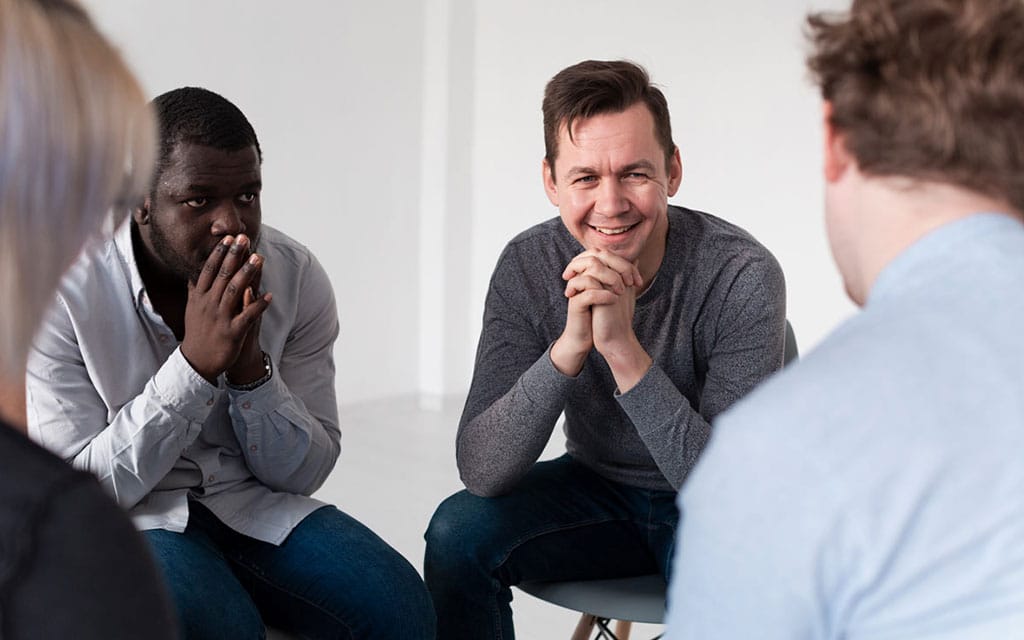You’ve been dealing with a lot of stress recently. Your job has you working long and hard hours when one day, you get injured. You go to the doctor and end up walking out with some painkillers.
When you take them, you begin to realize they don’t just help with your pain… they help you not think about other things, too. You get upset when the bottle runs empty and you start to try and find ways to refill your prescription, even if your injury no longer hurts.
Maybe you even take it a step further and swipe some from a family member who needs them. You start to look into ways to obtain them without a prescription. It’s all you think about whenever you’re not on them. Without you realizing it, they have taken over your life.
The opioid epidemic isn’t just people participating in substance use in “sketchy places” or constantly looking haggard and reclusive. If you’re reading this, you’re probably aware of the fact that opioid use affects our friends and families, our neighborhoods, and our workplaces. It’s impacting people from many different walks of life, and it’s not uncommon for it to be impacting someone you know, too.
According to the CDC, in 2020 there were approximately 43 opioid prescriptions given out for every 100 people across the country. While Indiana used to be higher than the national average, we now currently have an average of 18 opioid prescriptions per 100 people. Not every prescription will inherently lead to opioid addiction, otherwise known as an opioid use disorder, but it’s still an important number to keep in mind.
If you think you or a loved one might be managing an opioid use disorder, Recovery Centers of America is here to help. You’re not alone, and recovery is always possible. Let’s start first by talking about opioid use disorders, how they impact Hoosiers, and how treatment works.
How Are Opioid Use Disorders Diagnosed?
Just because someone has an opioid prescription doesn’t mean they will develop an opioid use disorder. If you use opioids outside of medical direction, whether that’s without a prescription or by taking more than you’re prescribed, this will increase your chances of developing an opioid use disorder.
Some of the key factors of a “substance use disorder” revolve both around a person’s ability to safely end substance use on their own, as well as how much it’s impacting their life as a whole. The following should be used to help a person ascertain if seeking help might be a good idea, not a means to self-diagnose.
If substance use is:
- Regularly taking up large portions of your day (from thinking about it to partaking in it to recovering from it)
- Becoming more important to you than events or activities you used to enjoy (making you miss your child’s school play or skip weekly game night)
- Causing you to have mental or emotional distress (you become more stressed whenever you’re not on them)
- Something you’re unable to cut back on or stop, even if you want to (it’s all you can think about)
- Causing you to experience side effects when you aren’t partaking in it
- Impacting those around you, whether from your behavior to your choices (your partner is afraid of you when you’re in between doses)
- Causing you to make risky decisions that you normally wouldn’t when partaking in the substance
… then it might be time to start looking into getting some help. There’s no shame in that. Substance use disorders aren’t your fault, and recovery is always possible.

What Are the Dangers of an Opioid Use Disorder?
Opioids are currently one of the leading causes of overdoses in the United States. This is primarily due to polysubstance use as well as fentanyl-lacing occurring without people’s knowledge.
Fentanyl is a highly potent, synthetic opioid that has seen an increase in prevalence due to its cheap cost to produce. Because of this, many dealers have been “cutting” substances like cocaine, heroin, and meth with fentanyl to boost their profits while still creating a similar experience. The problem with this lies in how potent fentanyl truly is. When people don’t know it is in the substance they are taking, they can consume their normal dosage without realizing that it will impact them much greater than normal. This can often lead to unintentional overdoses.
In addition, with long-term opioid use, you have the chance of experiencing withdrawals when you stop taking it. Sometimes even those who take opioids as prescribed can experience withdrawal. If you are taking opioids with medical advice, and you’re concerned about withdrawal, don’t be afraid to talk to your doctor about it.
Opioid withdrawal is one of the primary reasons that facilities like Recovery Centers of America offer medication-assisted treatment programs (MAT). Going through withdrawal from opioids can be very taxing. Utilizing a detox and MAT program can help reduce symptoms and cravings so clients can instead focus on their recovery. Overall, research shows that those who adhere to an MAT program are 3.5 times less likely to overdose again in the future than those who don’t complete an MAT program. It can also be utilized to help block the effects of opioids should a person take them while on an MAT program.
Don’t wait to get the help you or a loved one urgently need
What to Expect From Opioid Rehab in Indianapolis
Everyone who comes through our facility here at Recovery Centers of America gets started with a case manager who is there to help you find success. Our case managers work with clients and their therapists to lay out a recovery plan so that we can make sure you reach your recovery goals. This case manager will work alongside you during the duration of your stay and help adjust your recovery plan as needed.

How Common Are Opioid Use Disorders?
In 2020, the Substance Abuse and Mental Health Association found, in their national survey on drug use, that 1% of Americans aged 18+ reported using opioids, 0.3% reported heroin use, and 0.9% reported misusing prescription pain relievers. 1% of Americans is equivalent to over 3 million people.
Who Is At Risk for Developing an Opioid Use Disorder?
As mentioned before, simply having a prescription for an opioid, or just partaking in it once, won’t inherently make you develop an opioid use disorder (OUD). However, it’s always important to note that any level of substance use against medical advice always comes with risks.
While there is no set formula for how to develop an OUD, there are many factors that have been shown to contribute to people developing one. Oftentimes there is already another underlying concern such as stress, mental health, a bad home life, loneliness, or more. When people are then exposed to opioids as an option, it might become their substance of choice as opposed to alcohol or something else. Some of the main reasons people might be exposed to opioids include work-site injuries and pain management, especially for elderly people.
It’s important to note that the prescribing of opioids alone is rarely enough cause to develop an OUD. It’s the prior triggers and underlying causes that normally drive the substance use. This can mean, also, that those who are already managing an SUD, when exposed to opioids, might also develop an OUD.
Opioid Addiction Treatment at Recovery Centers of America
If you or a loved one is here seeking recovery options from opioid use, you’re in the right place. Our team here at Recovery Centers of America is ready and equipped to help you along your recovery journey by treating your addiction at the source. Our staff consists of trained, medical professionals, many of whom have been through recovery themselves.
Recovery is always possible, no matter what stage of your journey you’re in with substance use. We offer everything from detox to inpatient and outpatient programs, all of which are backed by clinical excellence. We utilize both research from our own team as well as feedback from our clients to constantly improve our program to be the best it can be. When programs don’t adapt and change over time to continue to improve, they can make outcomes less successful over time. That’s why we provide ongoing training and feedback to our clinical teams, all backed by real-time patient outcomes tracking so our clinicians and patients can see what’s working every day.
We work to help ensure that as many people as possible have access to proper care and treatment for OUDs. We’re in-network with most insurances and even offer transportation up to 2 hours away, both here and back, in order to ensure you can reach the care you need.
Let’s look more at what you can expect from our treatment programs.
If you have any questions about our programs or admissions process, our staff is here to help 24/7 at 1-800-RECOVERY. We want to help you, and we’re ready whenever you are.
After opioid detox, the journey continues…
While detox gets you through acute periods of withdrawal, other symptoms—particularly psychological ones—might persist past the initial detox period, making continuation of treatment after the initial detox period critical. Our continuum of care includes:
FAQs About Opioid Treatment
How do you treat an opioid addiction?
Opioid addiction is normally treated through a combination of detox, and inpatient/outpatient programming. Detox helps you manage withdrawal and inpatient/outpatient helps you build the skills you need for recovery.
What are 3 signs of opioid addiction?
If you find you’re craving opioids, unable to stop taking them on your own, or are experiencing withdrawal when you don’t take opioids, you might want to seek medical help.
What are 3 medications that can be used to treat opioid use disorder?
Some of the most common medications used to treat opioid use disorders include Suboxone, Subutex, and Vivitrol.
